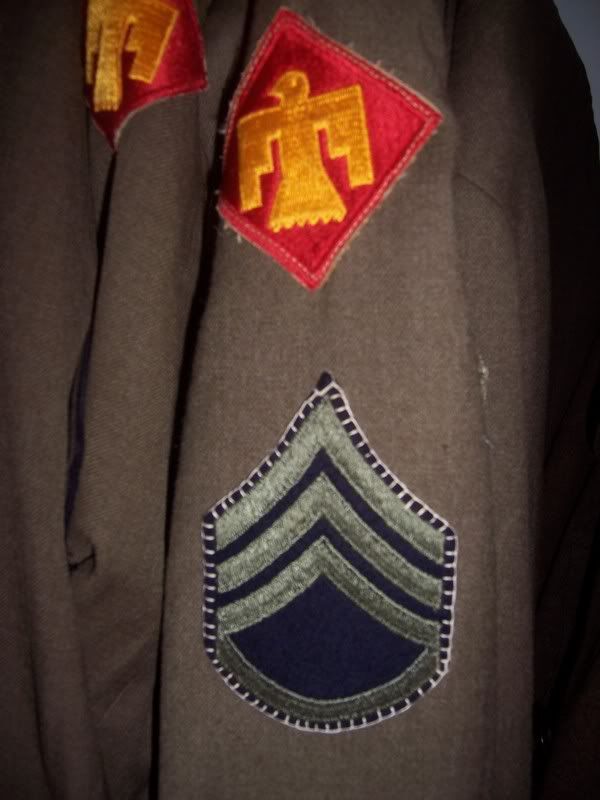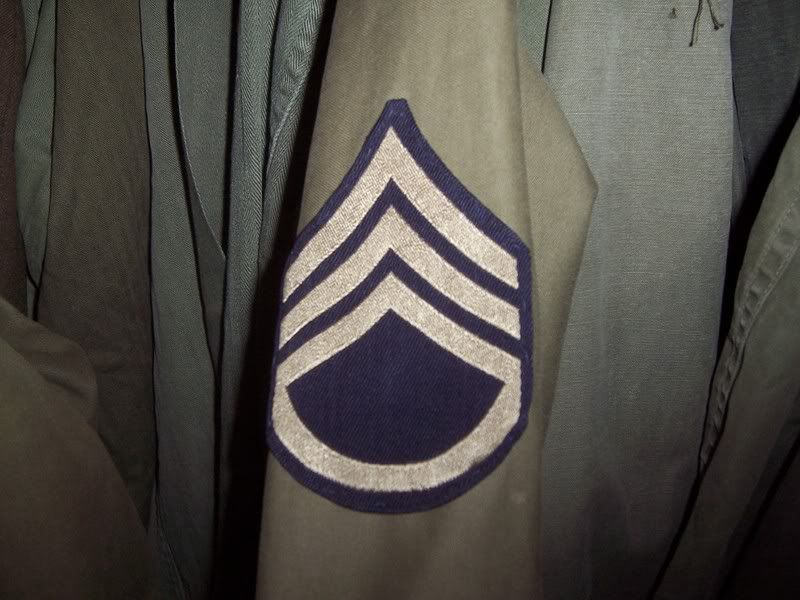Woodard
Global Moderator 
Posts: 379
|
Post by Woodard on Feb 5, 2008 18:24:23 GMT -5
|
|
stu
Corporal 
Posts: 36 
|
Post by stu on Feb 5, 2008 20:22:44 GMT -5
great looking shots there.
Is that an M48 Toyota in that one picture? Those are hard to come by.
|
|
cco23i
Corporal  "Say, AAAAAAAAH"
"Say, AAAAAAAAH"
Posts: 50
|
Post by cco23i on Feb 6, 2008 2:18:58 GMT -5
Those shots look great! Only suggestion I would have is to use WW2 stripes as the small stripes were later in the war.
Scott
|
|
|
|
Post by etooloperator on Feb 6, 2008 14:29:10 GMT -5
Those shots look great! Only suggestion I would have is to use WW2 stripes as the small stripes were later in the war. Scott Scott: IMO, their use of "goldenlite" stripes as part of the early war impression is on point, seeing as the switch-over to the "new" rank system was a pre-war development. From "history.army.mil" -- "The proliferation of specialist positions after World War II resulted in a revision of grade structure and rank insignia in 1948. The new system identified combat and noncombat (or technical) functions by smaller size chevrons of reversed color scheme. Combat leaders, such as a sergeant from a reconnaissance platoon, now wore three stripes and one rocker in blue on a goldenlite background; contrasting colors...indicated noncombat duties." www.history.army.mil/html/artphoto/pripos/prponco3.html If you have a copy, check out Shelby Stanton's "Uniforms and Equipment of the US Army in the Korean War" for more detailed info on this topic. The small stripes, as they were, were not well received among NCOs and were either officially or unofficially phased out at some point during the war. One source I read said as early as 1951, although I'd take that with a grain of salt. The smaller stripes still saw use throughout the war, though. A lot of guys tacked them to their pile cap bills, from photos I've seen. |
|
|
|
Post by foxholetom on Feb 6, 2008 15:52:39 GMT -5
E-Tool Operator,
You are correct. The so called "Goldenlites" was introduced in the late 1940s, and was poorly received. In 1951 a new style of chevron was introduced. It is the same size and style as WW2, however the materials are in a different color configuration than seen during WW2. These are sometimes confused with WW2 stripes. I will post a photograph of them sometime this week if I have time before drill.
|
|
|
|
Post by etooloperator on Feb 6, 2008 16:04:17 GMT -5
E-Tool Operator, You are correct. The so called "Goldenlites" was introduced in the late 1940s, and was poorly received. Call me nutty, but I actually like the little buggers. Perhaps because they can be stitched on a jacket in less time than a WWII-sized set of chevrons...I don't know.  ;D |
|
|
|
Post by foxholetom on Feb 6, 2008 17:40:03 GMT -5
They're certainly distinctive. I've noticed that they are not generally well liked in period accounts, nor by collectors/reenactors. Myself, I'm partial to the late Korea War stripes because typically people don't know what they are.
|
|
|
|
Post by foxholetom on Feb 6, 2008 17:59:11 GMT -5
  Two styles of WW2 stripes, one made of rayon embroidered on wool felt, the other rayon embroidered on cotton.  Korean War stripes, rayon, embroidered on cotton. The stripes themselves are olive drab. These stripes are in turn replaced in the late 1950s by the green and gold stripes of the Vietnam era (and through today for the Green service uniform). |
|